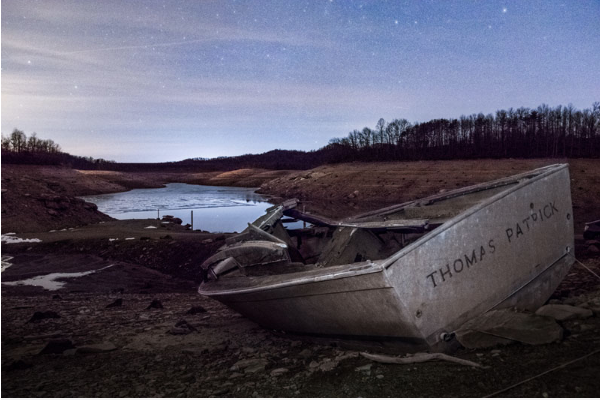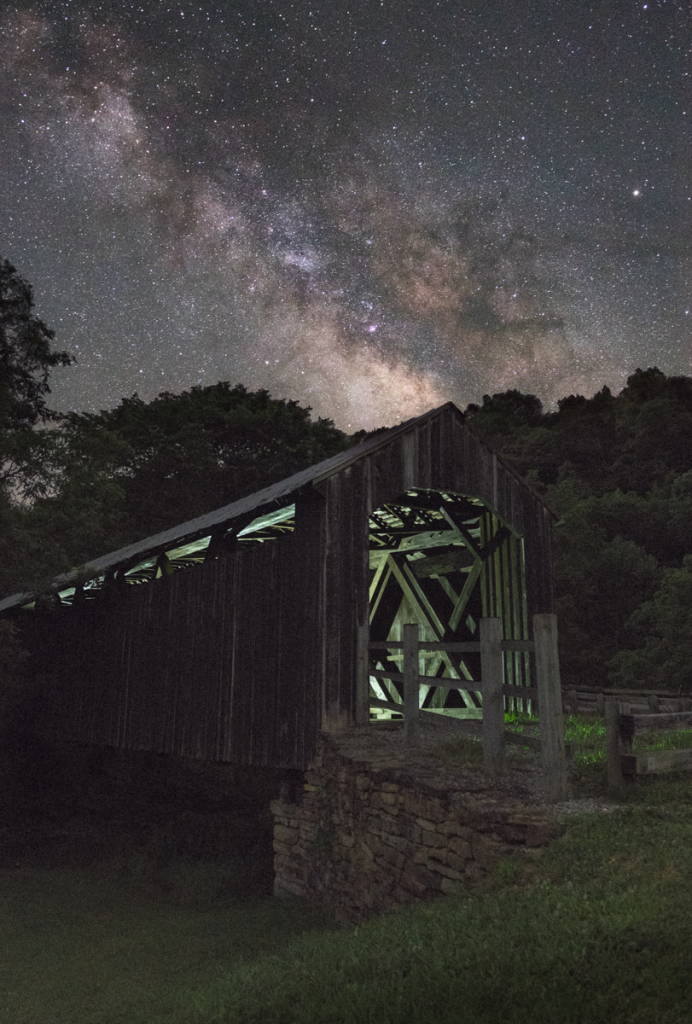
One of the biggest challenges when it comes to night photography is incorporating good foreground elements, but learning a few simple tricks will instantly elevate your game.
If you’ve ever snapped a shot of the Milky Way in a very dark area on a moonless night, you will find that the landscape elements will often be silhouetted against the night sky. This is because star light alone does not provide enough light for the camera sensor to detect, even during the sensitive, long exposures used to capture stars.
I enjoy playing around with silhouettes myself, but having a detailed foreground often makes a night time photo more interesting. Multiple exposures and blending using layers and masks in Photoshop combined with light painting, is necessary to avoid that shadowy negative space in most cases. However, that is beyond the scope that I intend to cover with this article. There are tutorials online on the topic and I will probably devote a future post to blending. For now, I’ll discuss light painting and taking advantage of external light sources to illuminate your shots.
The Milky Way was the subject in this photo taken from the West Virginian Highland Scenic Highway. I only wanted to use the shape of the landscape to ground it, so details weren’t necessary
These natural stone formations called ‘Hoodoos’ in Utah’s Bryce Canyon looked like people in the dark. If they were well lit in the it would distract from that illusion.
Painting with light
To understand how a camera collects light data, it might be easy to draw a comparison to a painter painting on a blank canvas. Areas on the painter’s canvas will appear lighter with lightly applied brush strokes, but apply more paint to the same area and it becomes darker and more defined by that color.
What we see as light are actually photons that exist on the visible plane of the electromagnetic spectrum. Think of the camera sensor as being a canvas, and photons the paint. When photographing stars and the dimly lit night sky, the aperture is set wide, ISO sensitivity is high, and the shutter is usually left open for 15-20 seconds in order to allow as many photons as possible to collect on the camera sensor and give us a complete picture at the end of the exposure.
A 5 second exposure will appear twice as dark as a 10 second exposure at night because there is half as much light collecting on our canvas. A dark foreground will remain silhouetted at any of these shutter speeds because there are many times less photons that are being reflected off these objects than there is being emitted from the night sky. There are exceptions of course, where a highly reflective surface like concrete, limestone, or sand may reflect enough light to be seen in camera with one exposure at these settings.

On the other hand, take a photo during the day with these same settings and the image will appear entirely white where the sensor in the camera has been so excited to the point of saturation, causing clipping all over, and no amount of post processing can recover the detail in these areas once that happens.
Due to the sensitive camera settings that are required to shoot the stars, it’s important to be sure our light source is not very powerful or we risk saturating the camera sensor with light and blowing out the highlights or making the foreground lighting too dominant in the scene.

For this task, I simply use low-output LED flashlights or an LED panel. LED flashlights are better suited than traditional incandescent lights because they put out an even beam of light, especially if there’s a floodlight mode. The small and cheap LED key chain lights work well because they are easy to control and can be turned on/off with a simple button click. I will also use an LED panel with adjustable brightness for constant, controlled lighting and these are well suited to light the inside of structures, creating silhouetted subjects, or to provide steady lighting for timelapse. You can mount these on any tripod too, which helps.
To paint, you will quickly flash the light over the subject you want to light during the exposure, making sure to smoothly pan the light evenly over the foreground. Just as with accumulating layers of paint, leaving the flashlight in one spot for too long will result in brighter areas. Getting the right amount of light will take trial and error and I like to shine the light from an indirect angle to create shadows and texture. Sometimes it can be helpful to “dampen” the light by placing a light cloth or plastic bag over the flashlight. Here are more examples:





Ambient light sources
Street lights can be annoyances when it comes to night photography, but sometimes you can use them to your advantage.

Moonlight and twilight can be used as lighting sources as well. These can be done with single exposures and careful planning, but combining exposures taken at different times from the same spot is the most versatile way to go.



Finally, you can use ambient star light to light the foreground and this will create the most natural look. Very long exposures in bulb mode are required however, as is multiple exposures and stacking. This works especially well in rocky areas where light is more readily reflected.
[REWIND: The Star Trail: Night Photography by Ben Canales]

About the author
 Jesse Thornton is a photo artist based in West Virginia, USA, with an interest in natural landscapes, long exposure and night photography. You can find more of his work on his website, blog, Facebook, Instagram, and 500px. This article was also published here.
Jesse Thornton is a photo artist based in West Virginia, USA, with an interest in natural landscapes, long exposure and night photography. You can find more of his work on his website, blog, Facebook, Instagram, and 500px. This article was also published here.
CREDITS: Photographs by Jesse Thornton are copyrighted and have been used with permission for SLR Lounge. Do not copy, modify or re-post this article or images without express permission from SLR Lounge and the artist.







Get Connected!